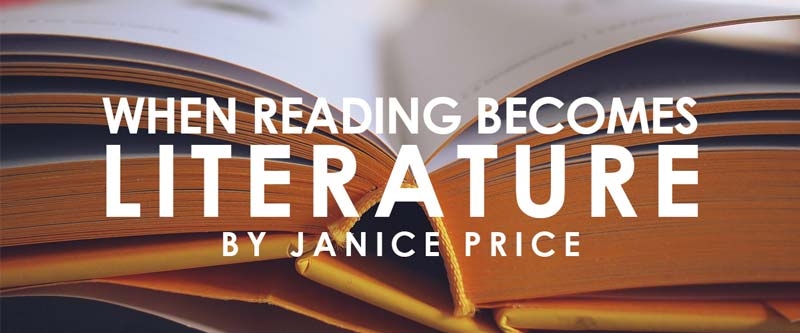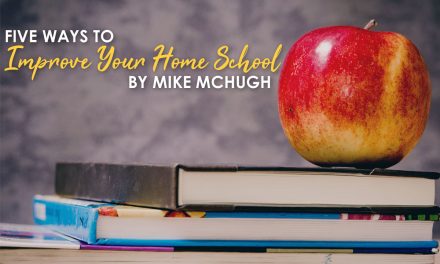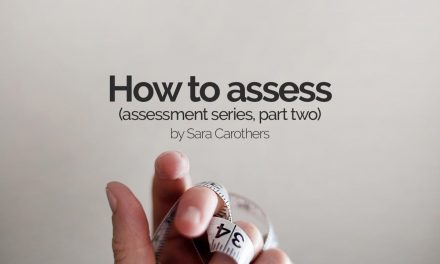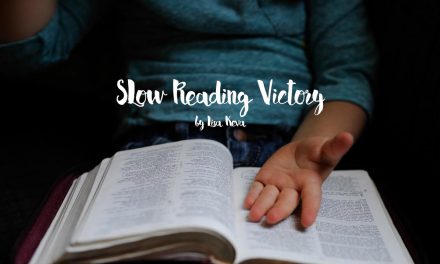Somewhere between first grade phonics and high school graduation, reading becomes “literature.” No one would seriously contend that “Dot had a dog. The dog is Mag.” is literature and no one would dispute that To Kill a Mockingbird is anything less.
Attempts to define “literature” usually identify three characteristics:
- Literature addresses topics that are of deep interest to many, many people.
- Literature supplies insight into those topics.
- Literature is about “how” something is said, not just “what” is said.
Even if there were no such things as standardized achievement tests, Common Core, or college entrance exams, most of us would recognize that we have a responsibility to give our students the tools they need to dig deeper into the books they read – and to encourage them to read certain books. But, of course, the big question is how do we do that?
There are essentially two ways to study literature – an anthology approach and a whole book/works approach. Most classroom programs dating even as far back as the McGuffey Readers use an anthology approach. Grade level readers provide collections of phonics-controlled stories in the early elementary years and then gradually phase into material with more literary quality: poetry, excerpts from classic books, etc. By middle school, these readers typically include a very broad cross-section of literature from all genres. High school literature courses become more focused with year-long courses in World, American or British literature. The advantage of an anthology approach is that the student can experience a broad selection of literature chosen from a world-wide pool of well-known classical and contemporary authors. Short excerpts are the norm although whole poems are often included and usually one or two whole works might be studied to supplement the course. As a further advantage, an anthology of excerpts lends itself to developing a sense of literary history – which authors are from which periods, etc. Examples of anthology courses include BJU Reading/Literature, Mosdos Literature, Elson Readers, and Reading Street.
Whole books/works studies, on the other hand, allow the student to delve more deeply into a particular work as well as into the author’s background/message/craft, and, most likely, to remember more clearly what has been read. It’s not surprising that these types of studies are the preferred approach for Classical as well as Charlotte Mason orientations. Books/works are separated into various reading assignments with vocabulary, recall, comprehension, and literary analysis in addition to author/work background and suggested essays included. Some studies will also weave the literature into historical time periods. From there it may be a short step to merge these book studies into unit studies integrating with science, art, math, and language arts as well as social studies. Examples of whole book studies include Moving Beyond the Page, Memoria Press Literature Guides, Progeny Press, Veritas Comprehension Guides, ECS Novel Units, and Novel-Ties (to name a few). Courses that utilize whole book studies include Smarr Literature, James Stobaugh Literature, and the Excellence in Literature courses.
Common Core has impacted literature studies. The first impact has been in the choice of literature. CC requires a greater variety of non-fiction literature than previous norms. So, for example, CC-aligned literature anthologies will include more political speeches, more contemporary biographies, more cross-curricular expository writing, etc. “Response to Literature” composition assignments are also integral to CC English/Language Arts standards. Lastly, there is an increased expectation for synthesizing information from multiple sources (i.e. paired readings). These types of assignments are integrated into both literature studies as well as composition courses in CC-aligned material.
What all of these approaches to literature studies have in common is literary analysis. Even if that term seems a little foreign to you, you’re more familiar with some of these elements than you realize. Who hasn’t experienced “plot” or “character development” for instance. We keep our pages turning when we are caught up in the happenings of an exciting story. We have “gut level” responses to various characters – we love them, we hate them, we feel sorry for them, we are suspicious of them.
In grade-level anthologies, literary analysis is covered through examples in the reading selections (or perhaps the reading selections are chosen or ordered to sequentially cover the various literary elements). Likewise, whole book/works studies also cover literary analysis. Particularly striking examples are highlighted and the element explained as the study progresses (i.e. foreshadowing in The Scarlet Letter).
Middle school and early high school seem to be the best years to focus on literary analysis. A few years ago I taught a class of 7th to 9th graders utilizing Windows to the World. Using short stories (easy and quick to read), it provided an excellent introduction to literary terms and elements. The Teaching Literature Elements series of poetry, favorite chapter books, and picture books, or Figuratively Speaking, teaching classic literature all provide interesting examples of the more common literary terms: allusions, plot/suspense, characterization, symbolism, theme, setting, imagery, point of view, tone, and irony. But dig a little deeper and you’ll find more: parallelism, euphemism, similes, metaphors, anaphora, and epistrophe. If you’ve never heard of some of these terms, don’t despair. It will just be another example of the teacher learning right alongside their students.
Knowing common literary terms and being able to identify their use: these are the tools of the trade – the tools that help students to read, to infer, to analyze and, ultimately, to write about literature. There’s one more aspect of literary study to consider. Literature has the power to influence readers – to influence them for good or for ill. Being able to recognize the author’s worldview is another skill; a step toward exercising discernment in what they read and in what they think about what they read.
In our Reading Rx series of articles, we’ve covered “reading” from its beginning – decoding and phonics – through reading strategies and comprehension – and into the realm of literary analysis. If you have questions about any of the points we’ve raised or about any of the products we’ve mentioned, please contact one of our consultants. She will be very happy to talk with you, understand your situation, and offer guidance and encouragement. Happy reading!





